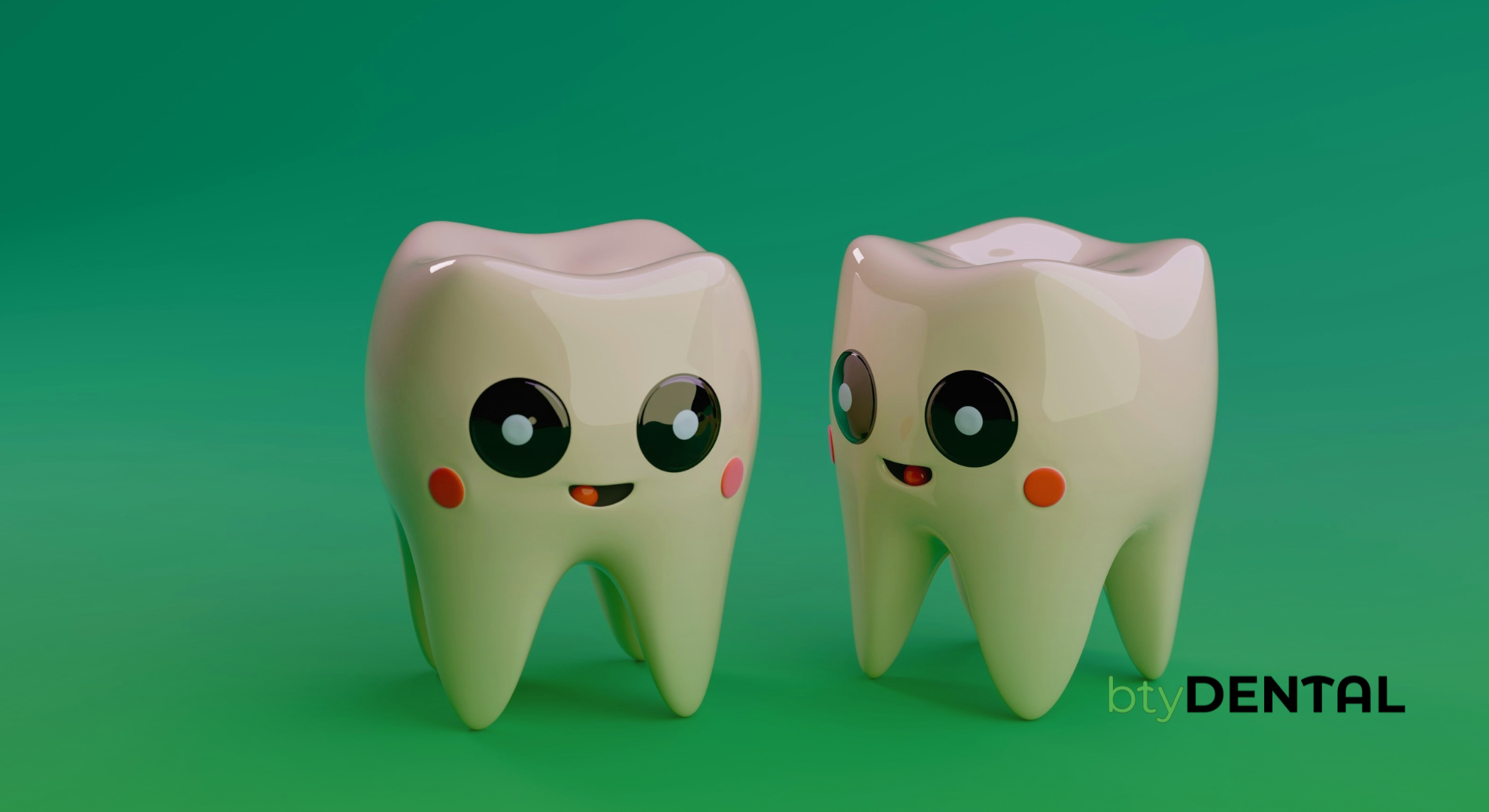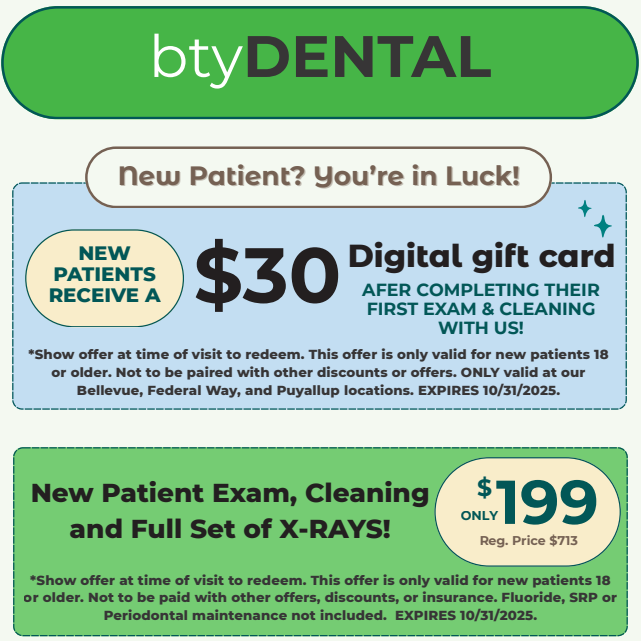
When you lose a molar, it can feel like a small issue, especially if it’s out of sight. But that empty space can quietly affect how your teeth align, how you chew, and even how your jawbone ages.
Many patients at btyDENTAL Bellevue are surprised by how much one missing tooth can change their bite. Replacing a lost molar early helps protect your bite, keep your jawbone strong, and maintain the balance of your smile.
This guide walks through three common ways to restore a missing molar: dental implants, fixed bridges, and removable partial dentures. Each has its own advantages depending on your oral health, lifestyle, and goals.
Why Replacing a Missing Molar Matters
Your molars do the heavy work when chewing. When one goes missing, the nearby teeth start drifting into the gap. This changes your bite and puts more stress on the surrounding teeth. Over time, food traps and uneven pressure can cause cavities, gum problems, and even bone loss.
Without the tooth root stimulating the jaw, the bone beneath starts to shrink. That’s why timely replacement isn’t just cosmetic—it keeps your smile strong and your bite comfortable.
Our Bellevue team always recommends evaluating your options soon after an extraction to prevent shifting and preserve jawbone health.
Option 1: Dental Implant
A dental implant is a titanium post placed into your jawbone to act as an artificial tooth root. After healing, a crown is attached to restore your smile. Implants look and function like natural teeth and help prevent bone loss by keeping your jaw stimulated.
Advantages
- Long-lasting and stable: Implants can last 15 years or more with proper care.
- Protects your natural teeth: No need to trim or reshape neighboring teeth.
- Prevents bone loss: Keeps the jawbone active and helps maintain facial shape.
- High success rate: Implants have a long record of reliable results.
Disadvantages
- Requires surgery and healing time: The bone and gum tissue need to heal before placing the final crown.
- Higher initial cost: Implants are an investment upfront, though they last longer than other options.
- Dependent on bone health: Some patients may need bone grafting if there isn’t enough bone for placement.
Before recommending an implant, our dentists assess your bone structure and gum health using 3D imaging to ensure you’re a good candidate.
Option 2: Fixed Dental Bridge
A dental bridge fills the space by anchoring a false tooth between two crowns on the adjacent teeth. The entire piece is bonded securely and looks natural in your smile.
Advantages
- No surgery needed: A bridge restores your smile without an invasive procedure, often in just two visits.
- Lower upfront cost than implants: A practical middle-ground option for many patients.
- Quick restoration: Ideal for those who want faster results.
Disadvantages
- Affects nearby teeth: Requires reshaping the neighboring teeth for support.
- Does not prevent bone loss: The jawbone beneath the missing tooth may still shrink.
- Limited lifespan: Bridges may need replacement after several years.
Bridges work best for patients who want a fixed, natural-looking solution but prefer to skip surgery.
Option 3: Removable Partial Denture
A partial denture is a removable plate with one or more artificial teeth. It clips onto your natural teeth and restores chewing ability and appearance.
Advantages
- Budget-friendly: The most affordable option for replacing several missing teeth.
- Non-invasive: No surgery or reshaping required.
- Flexible: Easy to adjust or expand if you lose more teeth later.
Disadvantages
- Less stable: Partials may feel loose or bulky at first.
- Daily cleaning needed: They must be removed at night and cleaned regularly.
- Does not stop bone loss: Since they rest on the gums, the jawbone still resorbs slowly over time.
Partials are a good option if you want something removable and cost-effective while planning for a permanent restoration later.
Comparison at a Glance
| Feature | Dental Implant | Dental Bridge | Partial Denture |
| Lifespan | 15+ years | 5–7 years | 5–10 years |
| Surgery Required | Yes | No | No |
| Bone Preservation | Yes | No | No |
| Effect on Nearby Teeth | None | Adjacent teeth reshaped | None |
| Maintenance | Brush and floss normally | Brush and floss normally | Remove nightly and clean |
| Cost Range | Higher upfront, long-term savings | Moderate | Lowest |
| Look and Feel | Most natural | Natural | May show clasps |
Choosing What’s Right for You
Each option has its place. Here’s a simple way to think about it:
- Choose an implant if you want a long-term, natural-feeling solution and have healthy bone.
- Choose a bridge if you want a fixed option that’s faster and less invasive.
- Choose a partial denture if you need a more affordable solution or plan to get permanent replacements later.
Our dentists in Bellevue will walk you through these options in detail so you can make an informed choice that fits your health, goals, and budget.
Final Thoughts
Losing a molar doesn’t have to mean losing your smile’s balance. Whether you choose an implant, bridge, or partial, replacing your missing tooth restores proper chewing, prevents shifting, and supports long-term oral health.
btyDENTAL Bellevue offers personalized care for every stage of your dental journey—from extractions to full-smile restorations. Schedule a consultation today and find the option that feels right for you.


